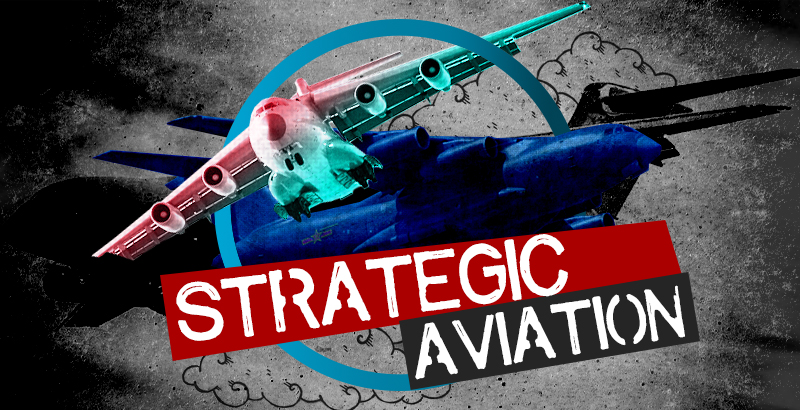
Written by Brian Kalman exclusively for SouthFront; Brian Kalman is a management professional in the marine transportation industry. He was an officer in the US Navy for eleven years. He currently resides and works in the Caribbean.
Introduction
Although combat aircraft such as the J-31 stealth fighter and J-15 aircraft carrier strike aircraft have made most of the headlines, China has made significant accomplishments in the realm of military transport, long range maritime patrol and carrier borne AEW&C aircraft over the past year. First operational in 2016, the Y-20 military transport is now the largest such aircraft in production in the world. Roughly the size of the Boeing C-17 Globemaster, the Y-20 is a crucial component in China’s growing ability to expand its strategic power projection capabilities. After initially expressing a need for 400 of these aircraft, the Aviation Industry Corporation of China (AVIC) later stated that this number was revised to 1000.
A further development in the realm of transport aircraft, was signaled with the announcement in September, 2016 that Aerospace Industry Corporation of China (AICC) will be entering into an agreement with Ukraine’s Antonov, to recommence production of the AN-225 in China. The AN-225 Mriya is the largest transport plane in the world. There is only one aircraft in operation, with one other plane left partially constructed before the Soviet Union was dissolved. AICC and Antonov have entered into a contract to complete the second aircraft, and then to begin production of additional aircraft under license in China.
AVIC began production of the AG600 seaplane in July of 2016. The AG600 is a large flying boat, capable of landing and taking off on water, or on land-based airstrips, as it has a conventional, retractable tricycle landing gear. It is similar in size to a Boeing 737 or Airbus 320 airliner, and the largest seaplane currently in production anywhere in the world. The stated role of the aircraft is search and rescue, firefighting and humanitarian relief; however, it may also be slated to supplement the Harbin SH-5 in long range anti-submarine warfare (ASW) patrols and aerial reconnaissance.
When the Liaoning CV-16 was commissioned into service with the PLA Navy (PLAN) in 2012, its reliance on Z-18J airborne Early Warning and Control (AEW&C) helicopters was immediately identified as a weakness. The ski-jump STOBAR operation of the Liaoning and second aircraft carrier currently under construction, cannot support the operation of a large, fixed wing AEW&C aircraft. CATOBAR operations, utilizing a steam or electromagnetic catapult are required to aid such large and heavy aircraft in taking off from aircraft carriers. Further evidence that China plans on building a third aircraft carrier that allows for CATOBAR operations are the discovery of what appears to be a fixed wing AEW&C aircraft, similar in appearance to the U.S. Navy’s Northrop Grumman E-2 Hawkeye, at the Wuhan testing facility. Whether this aircraft is a prototype or a mock-up is not yet known.
Strategic Airlift and Tactical Options
The large scale production of the Y-20 is a significant achievement of China’s state owned aviation industry, and forecasts China’s growing desire for a robust strategic airlift capability. Not only can the Y-20 transport a large amount of cargo or troops over a great distance, but it can even transport main battle tanks and other armored vehicles. With a maximum payload weight of 73 short tons, the Y-20 can transport the PLA’s most modern Type 99A or Type 96 MBTs, and any IFVs and APCs now in service. The aircraft has a maximum range exceeding 10,000 km (6,200 miles), and can carry a reduced payload of 40 short tons a range of 7,800 km. (4,850 miles). Range with the maximum payload of 73 short tons is approximately 4,500 km. (2,800 miles).
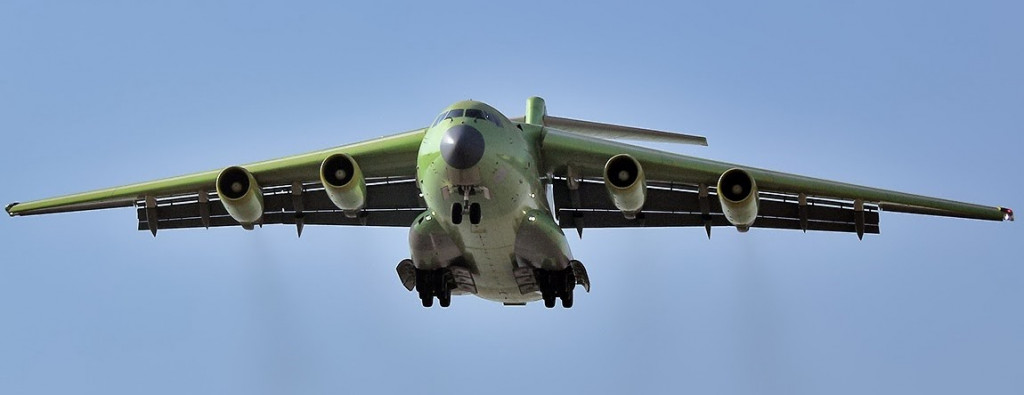
Y-20 descending to land. The large rear undercarriage and four Russian made D-30 turbofan engines are clearly visible from this angle.
Very similar in design, dimensions and appearance to the Boeing C-17 Globemaster and Ilyushin IL-76, the Y-20 was built to fill the roles of strategic airlift, paratroop transport, and heavy airdrop missions. It is slightly larger than the IL-76, yet smaller that a C-17. With the C-17 no longer being produced by Boeing, having halted production in 2015, the Y-20 is now the largest military transport aircraft currently in production.

One of the first production examples of the Y-20 in active service with the PLAAF. The aircrews have affectionately dubbed the aircraft type “Chubby Girl” for obvious reasons.
As China makes a concerted effort to secure its strategic interests both close to home, and as far away as the Horn of Africa, a viable strategic airlift capability is seen as essential. With a reported short takeoff ability of 700 meters (435 feet), the Y-20 can supply troops and supplies to any of China’s island outposts in the South China Sea that have an airstrip, such as Woody Island, Fiery Cross Reef, Mischief Reef or Subi Reef. Any military operations in response to territorial incursions on the part of other claimants to disputed territories in the region that required invading and occupying land would greatly depend on sufficient strategic airlift support. With tensions between China and the Philippines significantly lessened with the new Duterte administration, and cordial relations with Malaysia and Brunei, the likelihood of such a scenario has greatly reduced since last summer.

China is establishing large airstrips capable of supporting military aviation operations on man-made islands at Fiery Cross Reef, Subi Reef and Mischief Reef. A military airbase with a 2,700 meter long airstrip has been in operation on Woody Island in the Paracels since 1990.
The aircraft can also greatly aid the PLA in maintaining the new military base at Doraleh, Djibouti. The new military base is located just eight miles from Camp Lemonnier, the largest U.S. military facility on the continent of Africa, and will serve as a logistics base capable of supporting Chinese maritime interests in the Indian Ocean, The Mediterranean and the Persian Gulf. The Japanese Self Defense Forces also operate a small logistics support center adjacent to Camp Lemonnier, and will apparently be expanding this facility in response the Chinese project.
The question of Taiwan, and any future attempt to retake it by force of arms, would require a massive amphibious and airlift commitment. China lacks both at present, but as Southfront has diligently documented recently, the PLA and PLAN have greatly expanded and modernized their amphibious warfare capabilities. Any invasion of Taiwan would require not only a sizeable amphibious armada, but a substantial strategic airlift effort. The acquisition of up to a thousand Y-20s goes a long way towards building the nucleus of such a force.
A Heavy Lift Giant
While the benefits of the Y-20 program are quite easy to comprehend, AICC’s investment in the rebirth of the AN-225 Mriya are less obvious. The sole AN-225 in existence today conducts only one or two chartered flights a year. It is suitable for highly specialized heavy lift operations, and is extremely costly to operate. The AN-225 was originally designed in large part, to transport the Soviet Buran space shuttle. After the dissolving of the Soviet Union, Antonov could find no interested parties to put up the funding to complete the second airframe, which has been in storage in the Ukraine ever since.

The AN-225 “Mriya”. The largest cargo aircraft ever built.
Analysts theorize that the Chinese aim to either operate the AN-225 as a heavy lift cargo plane in the commercial air freight market, or to support the growing ambitions of the China National Space Administration (CNSA). China became the third nation in history to successfully put a man into orbit and return him safely to the earth, with the success of the Shenzhou 5 spacecraft in 2003. Since then, China successfully landed the Chang’e 3 unmanned lander on the surface of the moon at the end of 2013, plans to land the Chang’e 5 on the dark side of the moon in 2018, and has plans to operate a manned space station by 2020. China conducts space-based research with taikonauts currently in the Tiangong-2 space lab, which will form the basis of a larger modular space station. The CNSA has announced it plan for a manned moon mission by 2036, with the further aspiration of establishing a manned moon base sometime after that.
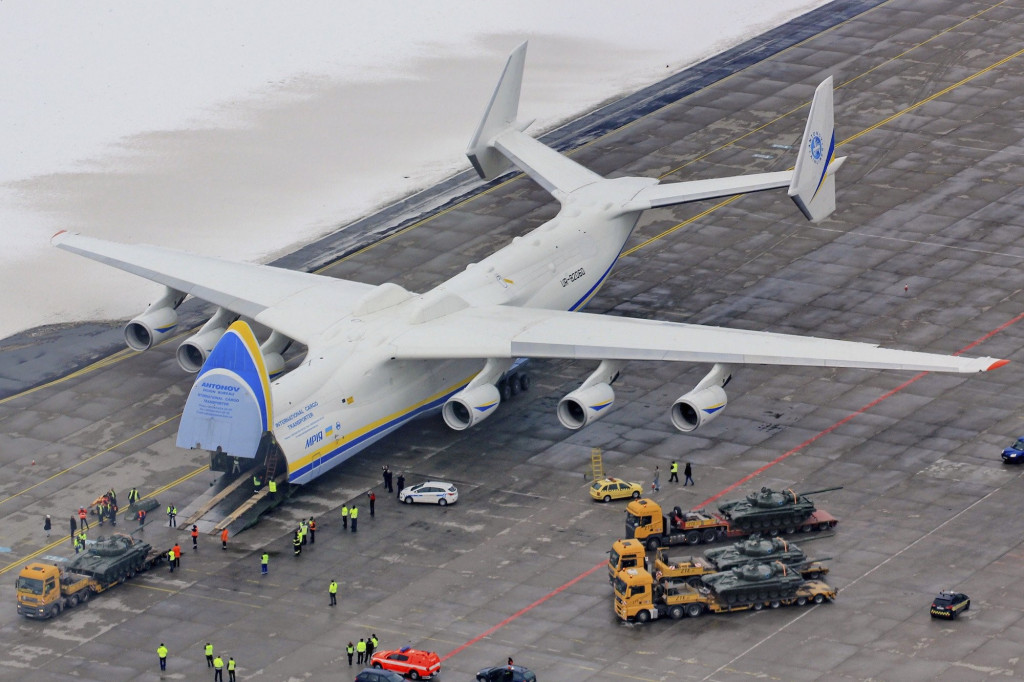
The Mryia loading T-72 tanks via its large nose access ramp.
China is most likely not interested in developing a large space shuttle; however it may desire the AN-225 as a transport for large rocket components or as a launch platform for a smaller, hypersonic “spaceplane”. It is rumored that the first successful launch of a hypersonic prototype drone was conducted from an H-6 strategic bomber in September of 2015. It may be that China wants to obtain the AN-225 to serve as a more suitable carrier aircraft for its growing hypersonic aircraft and missile programs.
Patrolling a Growing Maritime Domain
The development of the AG600 maritime aircraft is a case study that clearly confirms the growth of China’s aviation industry. Developed by AVIC as an amphibian aircraft meant to serve a host of civilian and military duties, although AVIC is downplaying any military role for the plane, it was designed and built in roughly two years. The Harbin SH-5, which the AG600 will replace, took a fledgling Chinese aviation industry nearly 15 years to design and produce, and only a since production run yielding 6 aircraft was the result. AVIC has received orders for 17 aircraft so far, all for the domestic market. Although the aircraft can accommodate 50 passengers, no commercial airlines have expressed interest in the design so far. It is more likely that the AG600 will be utilized by the PLAN as a long range maritime patrol aircraft.

The first production example of the AG600, completed in July of 2016.
With much in common with the ShinMaywa US-2 seaplane utilized by the Japanese Maritime Self Defense forces (JMSDF), the AG600 will fill a similar role in the PLAN. The US-2 currently operates as an air-sea rescue (SAR) and maritime patrol/surveillance aircraft. It is also quite likely that the AG600 will be further developed into an anti-submarine (ASW) patrol aircraft like its predecessor the Harbin SH-5. As China strengthens its position in the South China Sea and continues to develop the defense infrastructure on a number of man-made islands, a long range SAR aircraft will be a great asset is support of PLAN and PLAAF air patrols operated from these islands. The AG-600 is equipped with retractable landing gear, and can operate from an airfield as well as from water. The reported maximum range of the AG600 is approximately 4,500 km. (2,800 miles).

The AG600 bears a striking resemblance to the US-2 seaplane operated by the JMSDF.
Better Eyes and Ears for an Aircraft Carrier
China has been slowly and methodically building its aircraft carrier program since the late 1990s and has made a number of major achievements in the past five years. Although the construction of its first indigenously built aircraft carrier is a milestone, the Shandong CV-17 will still have all of the inherent limitations of a ski-jump Short Take-off But Arrested Recovery (STOBAR) platform. As discussed earlier in a detailed update of China’s aircraft carrier program, it is obvious to most analysts that the third aircraft carrier being planned will not utilize STOBAR, but will be constructed with either steam or electromagnetically driven aircraft catapults. The Catapult Assisted Take-Off But Arrested Recovery (CATOBAR) system of aircraft carrier launch and recovery allows for heavier, and or larger aircraft to operate from the deck of an aircraft carrier. Strike aircraft can carry a full weapons load and fuel load, both improving combat effectiveness and range. It also allows for the operation of larger, fixed-wing assets such as supply aircraft and more importantly, AEW&C aircraft.
The operational Liaoning CV-16, and the Shandong CV-17, which will most likely be commissioned in late 2018 or early 2019, rely on helicopters to perform supply, transport and AEW&C functions. Helicopters cannot achieve the range of fixed-wing aircraft, due to their poor fuel efficiency. The U.S. Navy utilizes the Northrop Grumman E-2D Hawkeye in the AEW&C role. The aircraft also serves as the main AEW&C aircraft for the French Navy’s Charles DeGaulle CVN; however, the French use the E-2C variant. The Indian Navy is currently considering the E-2D Hawkeye for its planned INS Vishal aircraft carrier, but the program is still in the very early planning stages. The Indian Navy is considering the purchase of four E-2Ds and utilizing them as land-based AEW&C platforms in the interim.
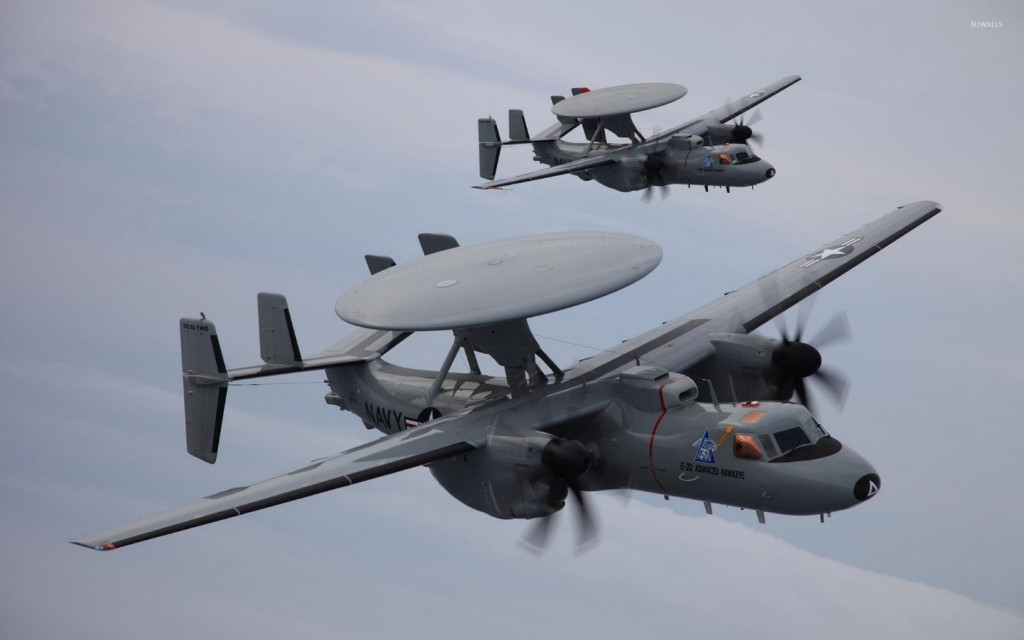
The Northrop Grumman E-2D Advanced Hawkeye is the most advanced fixed-wing, aircraft carrier based AEW&C aircraft in the world.
Photographic evidence of either a prototype AEW&C aircraft, or a full size mock-up of one similar in appearance to the E-2, have recently surfaced in social media. The “aircraft” was pictured on the flight deck of the CV-17 test rig at Wuhan. It is unknown at this time whether this is a functioning prototype or a mock-up for training purposes. It is unlikely that the PLAN would invest the time and effort in creating a mock-up, without any further intention of developing a real fixed wing AEW&C aircraft. The future CATOBAR aircraft carrier would greatly benefit from a fixed wing AEW&C aircraft.

AEW&C aircraft on the “flight deck” of CV-17 aircraft carrier test facility located at Wuhan.

Photo of a different aircraft than the one pictured above (note the dissimilar vertical tail surfaces). This aircraft appears to be a mock-up.

Additional photo of the same mock-up aircraft located at Wuhan. Horizontal and vertical tail surfaces appear to be non-functional.
Conclusions
After decades of investing in its indigenous aviation industry, one with humble beginnings, and learning as much as possible from both Russian and U.S. aircraft design, the nation has achieved the ability to develop a real strategic airlift capability. Although still reliant on Russian aircraft engine production to a large degree in its most modern aircraft, Chinese analogs of many other Russian designs have definitely afforded the Chinese aviation industry greater independence. The maturity of this industry in just the last decade has impressed its peers in both Russia and various Western nations.
The resources and funding allocated to acquiring strategic airlift on the level expressed in official government press briefings and reported by state run media in China all communicate an obvious desire to expand the ability to both project power and respond strategically to challenges to Chinese national interests on a global scale. China is rapidly breaking free from its regional power status, and will continue to gain greater influence in global economic, political, and military spheres.
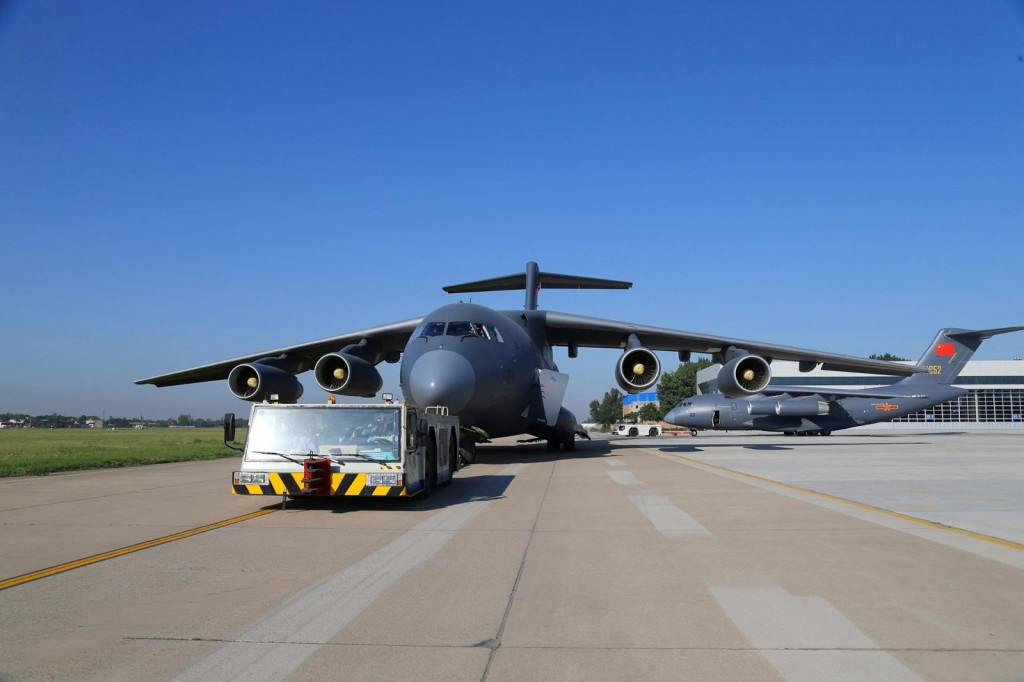
Two brand new Y-20s with the 12th Regiment of the 4th Transport Division of the PLAAF based at Qionglai Airbase. Strategic airlift will expand China’s regional and global reach.
China may communicate its peaceful intentions through diplomatic channels; however, it is sending a quite different message in real terms as it continues to develop and fortify its position in the South China Sea and the Horn of Africa. China is wisely seeking to protect the vital trade lanes that are its very life blood. The economic benefit from this trade has enriched the nation and helped to bring it out of an era of stagnation and subjugation to outside interests. China is once again rising to a level of global influence and importance that it has enjoyed for the overwhelming majority of its more than 5,000 years of history. It is crucial to note that over the vast majority of that same history, China has largely adopted a strategically defensive military posture, very rarely engaging in military campaigns of expansion against its neighbors. By further solidifying its position in the South China Sea, China is wisely occupying the “central position” as part of a larger defensive strategy to protect the vital trade lanes and resources that will ensure its continued prosperity.
One thing is clear, China is developing the military means to defend its position as a world power and is sending a clear message to its peers that it will no longer subordinate its own national interests to those of others, regardless of their global power status. A viable aircraft carrier force and a large strategic air lift capability send a clear message to the United States and Japan, that China is determined and quite capable of securing and defending its national interests on a global scale. This increasingly assertive posture need not lead to military conflict; however, an even more assertive United States has already bristled at the possibility of relinquishing any amount of control over what it sees as its sole, global sphere of influence.






Pakistan wishes all the best to its ever green friend,love you China